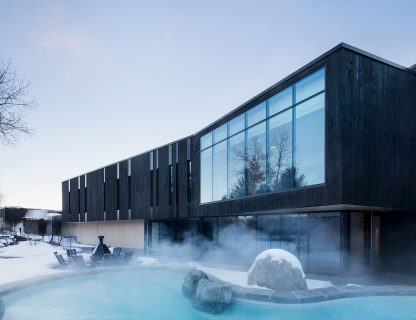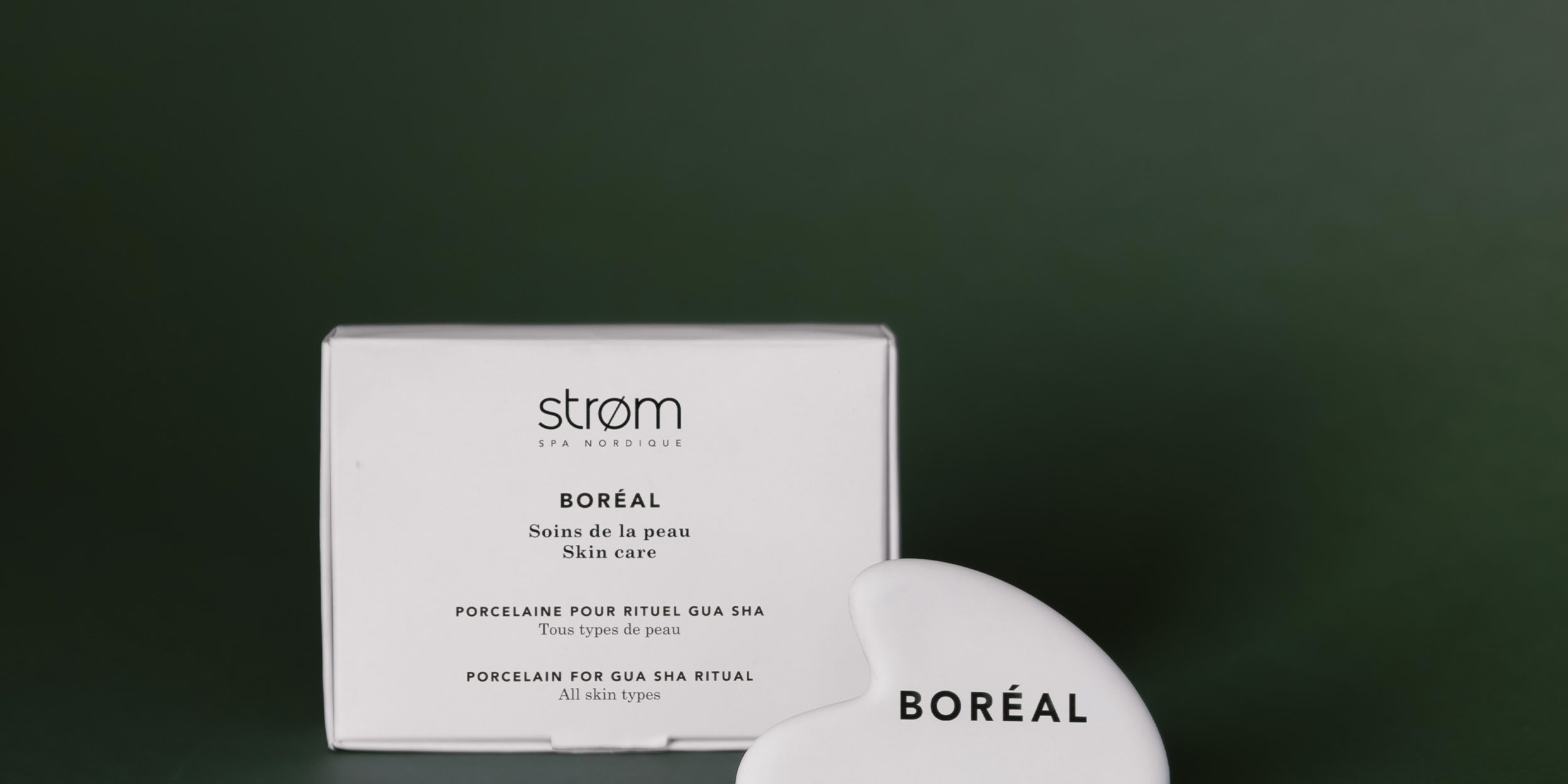Strøm Nordic Spa has a resolutely Scandinavian DNA. The north and the boreal forest are at the heart of everything we do, so it’s only natural that our B ORÉ AL skin care line is born from the richness and power of local natural ingredients.
However, our desire to offer you the best care and practices isn’t limited to a single territory, a single culture, or a single tradition. All over the world, people are adopting beauty and wellness routines to feel good in body and mind. And while new, innovative techniques are sometimes the basis of these rituals, they are also often rooted in centuries-old gestures and knowledge passed down from generation to generation.
For this addition to our skin care line, we focused on a practice of traditional Chinese medicine: gua sha. To learn a little more about this subject, we spoke with Léa Bégin, the founder of Minēra, with whom Strøm is collaborating for this new integration, as well as Phiane Duquet, a world champion in massage therapy and a specialist in gua sha massage, to whom the ancestral heritage has been passed down by her family.
Here is gua sha, in 10 points.
1. AN EVERYDAY CAREToOL
More than a facial care ritual, gua sha is traditionally used on a daily basis, all over the body. “For example, it is used to relieve back pain and headaches, to relax a tight jaw, or to reduce excess body heat, according to the application in traditional Chinese medicine,” explains Phiane Duquet.
2. THE ETYMOLOGY
“Gua sha” literally means “scraping the pain,” Duquet continues. “The drainage effect and the activation of the blood circulation encouraged by the movement are recognized for eliminating metabolic waste and therefore help alleviate certain imbalances or soothe muscle tension.”
3. THE SPIRITUAL DIMENSION
“According to the ancestral art of lithotherapy, the object used has different properties depending on the stone from which it is made. Consequently, gua sha would traditionally have an influence not only on people’s physical appearance, but also their emotions,” Duquet recounts. Its use in traditional Chinese medicine is therefore anchored in a holistic approach to health and wellness.
4. THE INTEGRATiON INTO SKINCARE PRACTICES
Because it stimulates blood circulation, gua sha is also practiced for its benefits on the skin of the face. Lymphatic drainage, redefining the oval of the face, restoring radiance to the complexion, a lifting effect, reducing fine lines and wrinkles… the benefits are numerous. Léa Bégin evenspeaks of the technique as a non-invasive alternative or even a complement to Botox injections or fillers.
5. the tool
The object with which gua sha is practiced is a flat, angular stone, cut to adapt to the shape of the face. The materials used in its production may vary. In the case of the BORÉAL stone, it is porcelain consisting of a mixture of kaolin (for whiteness), quartz (for translucency), and feldspar (for strength). The porcelain is worked in Quebec in small quantities by Louise Bousquet, according to know-how from Limoges, France. The production process and the composition result in a matte, non-porous, strong, and durable tool that is easy to handle and grip, even when used with a treatment oil.
6.THE GESTURES
“It’s not the stone that does the work, but the technique,” Duquet asserts. Knowledge of acupuncture points, meridians, and certain facial reflexology principles contributes to an informed and effective gua sha practice.
7. THE IMPORTANCE OF THEORY
Knowing the theory behind the use also makes it possible to adopt the right gestures. For example, instead of releasing stagnant fluids that cause edema, improper gua sha use can instead promote congestion.
8. at home
To perform the ritual at home, a step-by- step instruction manual is provided. It is important to follow the instructions and— above all—to pay attention to how you feel. Although slight redness may appear, you must be careful not to injure the skin.
9. ThE RIGHT PRODUCe
In combination with the porcelain, an oil is used—in our case, the BORÉAL face, body, and hair ritual oil. In addition to allowing the tool to slide properly in order to produce effective movements, the combined use of a product helps nourish and hydrate the epidermis. Making the oil penetrate with a stone rather than with the fingers also allows for a better application and a longer- lasting effect, confirms Bégin.
10. CONTINUE TO STAY INFORMED
Although gua sha is an increasingly popular practice in the West, especially for its aes- thetic benefits, its roots and uses are vast. If the method interests you, we strongly encourage you to learn about the principles and history behind this ancestral wellness ritual. Knowledge from other places and times has inestimable value, and its modern application is a way of paying tribute to it.




